Walking through the historic streets of Recanati, I couldn’t help but feel the poetic inspiration that once moved Giacomo Leopardi, one of Italy’s greatest literary figures. Casa Leopardi stands as a living monument to his genius, still inhabited by his descendants while welcoming curious travelers like myself.
Casa Leopardi offers visitors a rare glimpse into the mind of a brilliant poet. The museum has an impressive 20,000-volume library where young Giacomo developed his extraordinary intellect. The museum also preserves his family home just as it was during his lifetime, creating an intimate connection between visitors and the writer’s world.
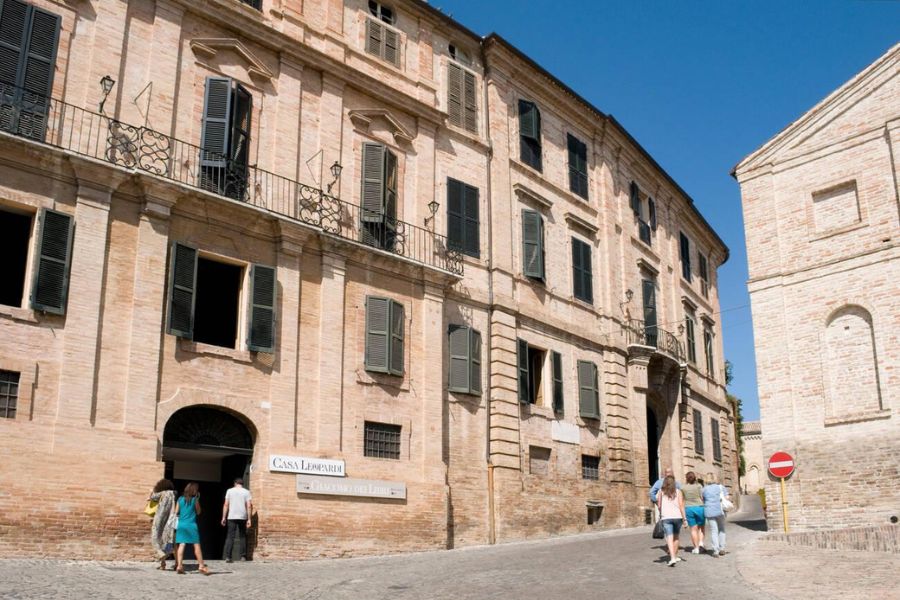
As I explored the rooms where Leopardi wrote his famous works, the Italian hills visible through the windows revealed the same landscapes that inspired his melancholic yet beautiful poetry. The town of Recanati itself feels like an extension of the museum, with streets and squares mentioned in his poems waiting to be discovered by literary enthusiasts and casual tourists alike.
The Life and Genius of Giacomo Leopardi
Giacomo Leopardi stands as one of Italy’s most profound literary voices, whose works continue to resonate with readers centuries after his time. His unique perspective on human existence and masterful command of language transformed Italian literature.
Childhood and Early Inspirations
Born in 1798 in Recanati, a medieval hill town in Le Marche, Giacomo Leopardi grew up in the impressive family home that now serves as Casa Leopardi museum. His childhood was shaped by his father’s extensive library of 20,000 volumes, where he spent countless hours teaching himself languages and philosophy.
By age 10, he had mastered Greek and Latin. His isolated upbringing in the family palace fostered both his intellectual brilliance and the melancholy that would later define his work.
The picturesque landscapes of Recanati significantly influenced his poetry. The rolling hills and distant horizons he observed from his window became powerful symbols in poems like “L’Infinito,” where natural settings invite deeper contemplation.
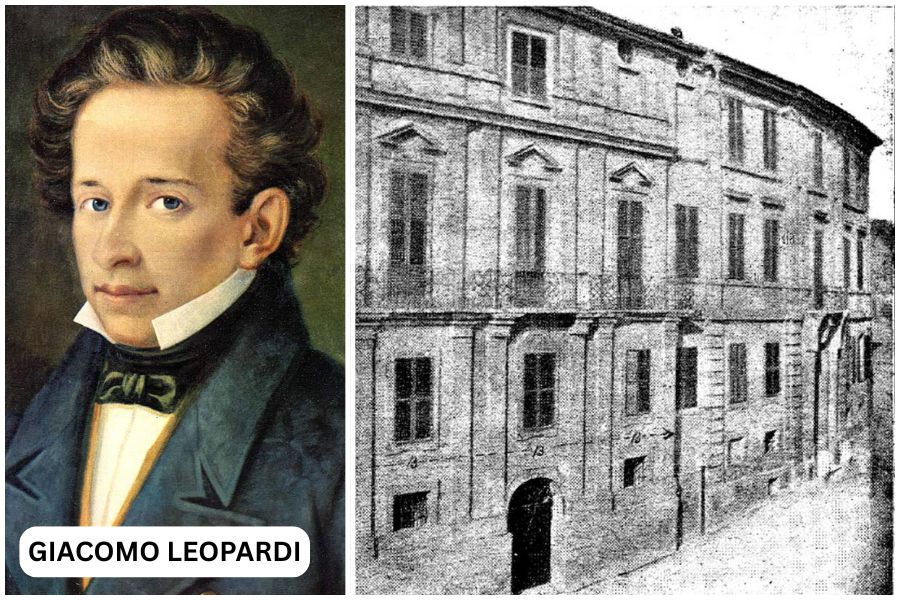
His physical ailments and strict family environment contributed to his introspective nature. These early experiences planted the seeds for his later philosophical explorations of suffering and beauty.
Contributions to Romanticism and Italian Literature
Leopardi revolutionized Italian poetry by blending classical form with Romantic sensibilities. His work bridged traditional structures with deeply personal emotional expression.
Unlike other Romantics, Leopardi rejected idealistic optimism. Instead, he developed a unique philosophical pessimism that examined human suffering with unflinching clarity and extraordinary beauty of language.
His masterpiece “Canti” (Songs) transformed Italian literature with its musical quality and emotional depth. These poems explore themes of disillusionment, nature’s indifference, and fleeting moments of beauty.
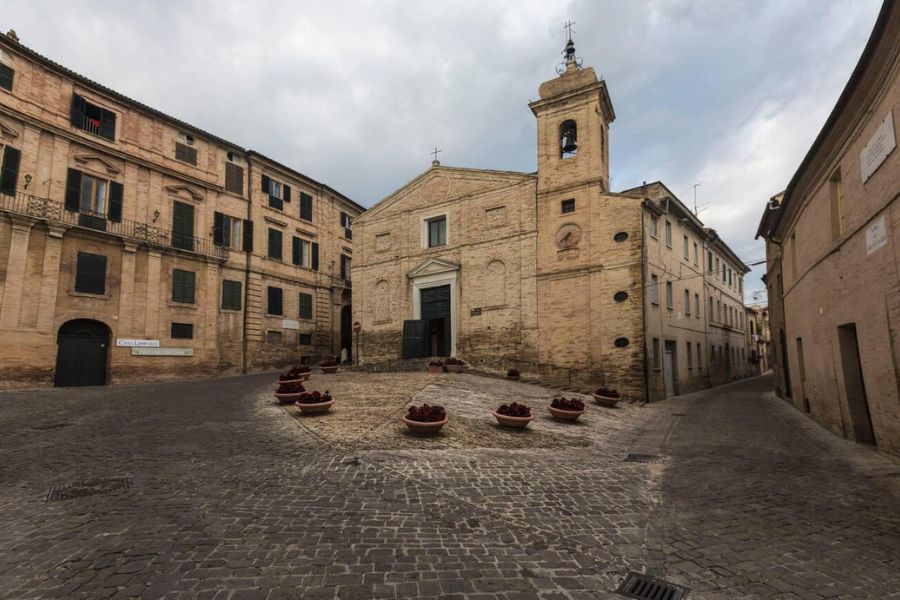
Leopardi’s prose works, especially “Zibaldone,” contain thousands of brilliant observations on literature, philosophy, and human psychology. His writings influenced later existentialist thinkers and modernist poets across Europe.
Enduring Themes in Leopardi’s Poetry
Leopardi’s exploration of human suffering remains startlingly relevant today. He confronted life’s painful realities while finding moments of transcendent beauty within that suffering.
His poems often examine the conflict between:
- Human desires and nature’s indifference
- The quest for happiness and inevitable disappointment
- Memory’s consolation and present reality
The theme of cosmic loneliness appears throughout his work. In poems like “The Infinite,” Leopardi creates moments where imagination temporarily overcomes human limitations, allowing glimpses of something greater.
His elegant simplicity of language makes complex philosophical ideas accessible and moving. When I visit Casa Leopardi, I’m struck by how his words still speak directly to modern readers despite the centuries between us.
Leopardi’s genius lies in transforming personal pain into universal art that continues to illuminate the human condition with rare honesty and beauty.
A Journey Through Recanati
Wandering through Recanati feels like stepping into the pages of Leopardi’s poetry. The hillside town in Italy’s Marche region captivates visitors with its medieval architecture and literary connections that inspired one of Italy’s greatest poets.
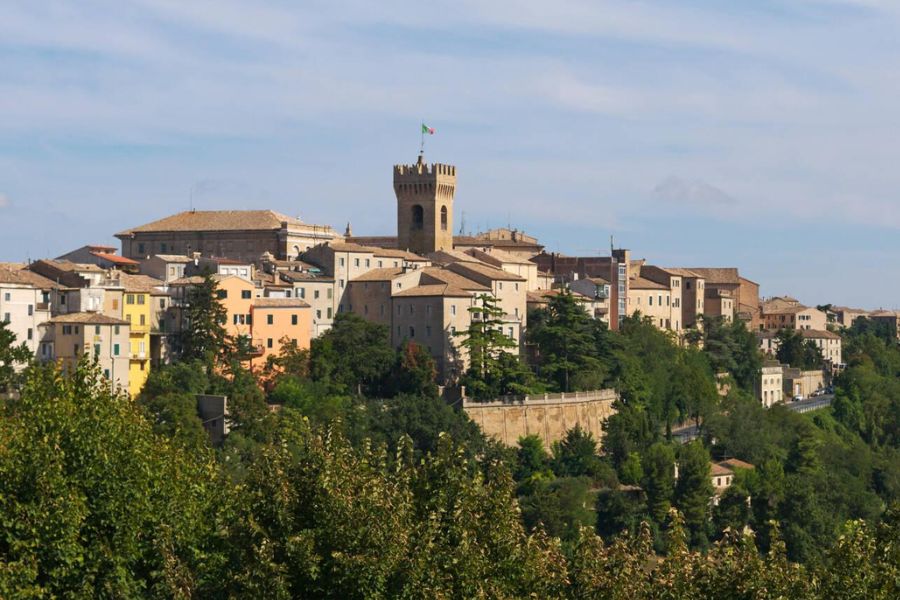
Historic Centre and Notable Landmarks
The historic center of Recanati is a maze of narrow cobblestone streets that wind between centuries-old buildings. I found myself constantly pausing to admire the well-preserved medieval and Renaissance architecture that gives the town its distinctive character.
Torre del Borgo stands as one of the most striking landmarks. This ancient tower offers panoramic views that took my breath away. On clear days, you can see all the way to the Adriatic Sea on one side and the Apennine Mountains on the other.
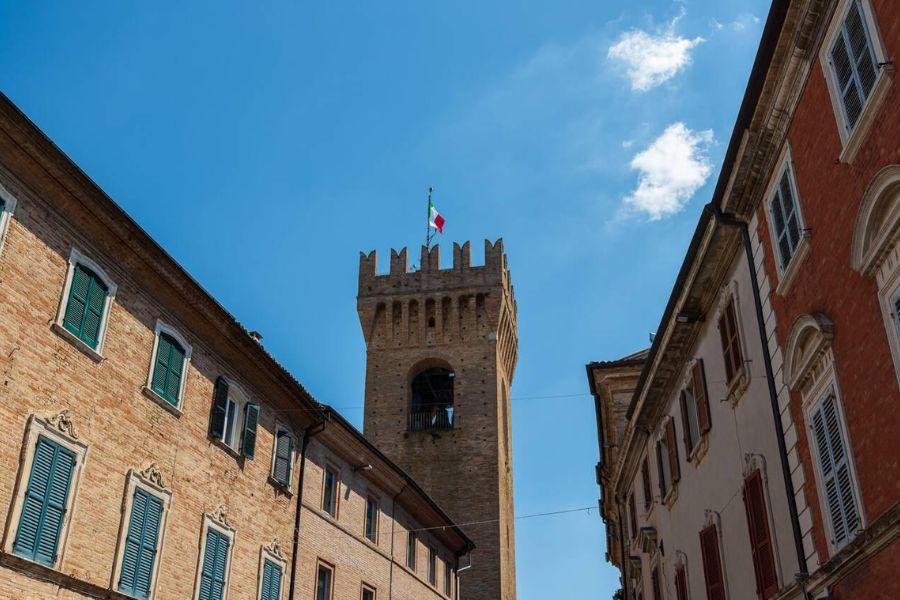
The Palazzo Comunale (Town Hall) houses interesting historical artifacts and documents related to the town’s past. Its façade is adorned with coats of arms that tell stories of the noble families who shaped Recanati’s history.
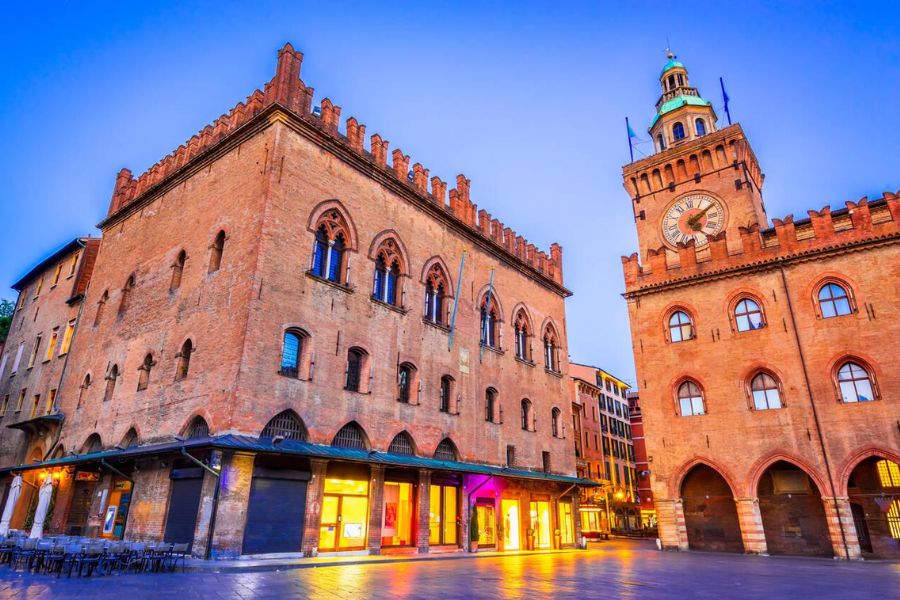
Piazza Giacomo Leopardi and Surrounding Attractions
Piazza Giacomo Leopardi serves as the beating heart of Recanati. This charming square is dominated by a bronze statue of the poet himself, which was erected in 1898 as a tribute to the town’s most famous son.
Around the piazza, you’ll find several cafés where I enjoyed sipping espresso while watching local life unfold. The square buzzes with activity during festivals and market days, offering a glimpse into authentic Italian culture.
Just steps from the square is the Church of San Domenico, home to a stunning Lorenzo Lotto altarpiece. This Renaissance masterpiece alone is worth the visit to Recanati.
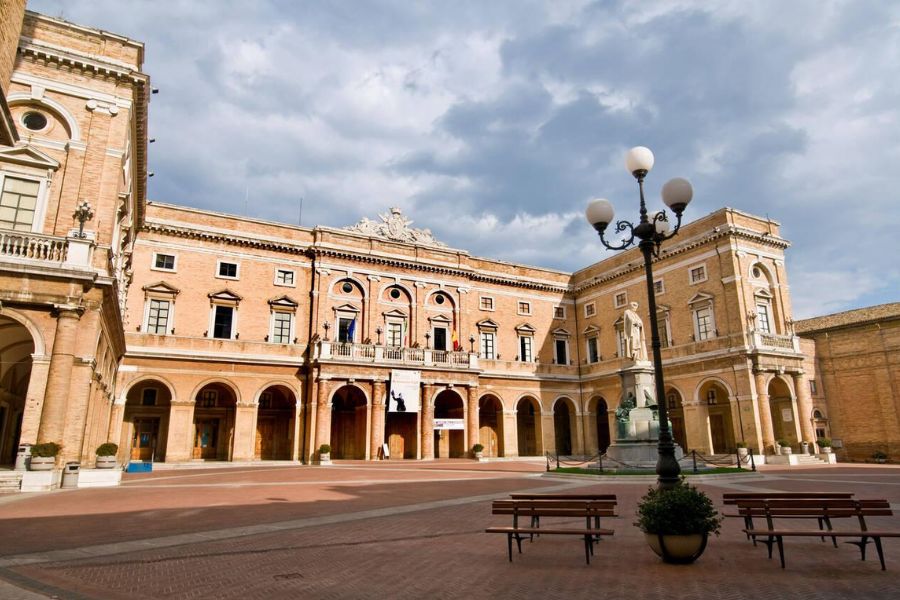
Sunday guided tours “In the Footsteps of Giacomo Leopardi” connect the various landmarks to the poet’s writings. I highly recommend this tour for literary enthusiasts and history buffs alike.
Discovering Casa Leopardi: A Guided Encounter
Visiting Casa Leopardi offers a unique journey into the world of one of Italy’s greatest poets. The guided tour provides intimate access to Giacomo Leopardi’s personal spaces, allowing visitors to connect with both the man and his literary genius.
The Leopardi Family Home and Museum
The Leopardi family has owned this modest noble palazzo in Recanati since the 13th century, and it’s still inhabited by their descendants today. Walking through these rooms, I felt the poet’s presence in every corner.
The guided tour is exclusively private, creating an intimate experience as you explore the poet’s birthplace. What struck me most was how the home remains alive and vibrant, not just a static museum.
You’ll see the family’s living quarters furnished with period pieces. The bedroom where Giacomo was born in 1798 contains original furniture and personal items that help paint a picture of his early life.
The tour guides speak excellent English, though hearing about Leopardi’s work in its original Italian language adds another dimension to the experience.
The Extensive Leopardi Library
The family library is truly breathtaking. It houses over 20,000 volumes collected primarily by Giacomo’s father, Count Monaldo Leopardi.
I spent nearly an hour examining the towering bookshelves that stretch from floor to ceiling. This is where young Giacomo educated himself, spending countless hours reading philosophy, classics, and literature in multiple languages.
The guides point out specific books that influenced Leopardi’s thinking and writing. Many volumes contain his handwritten notes in the margins.
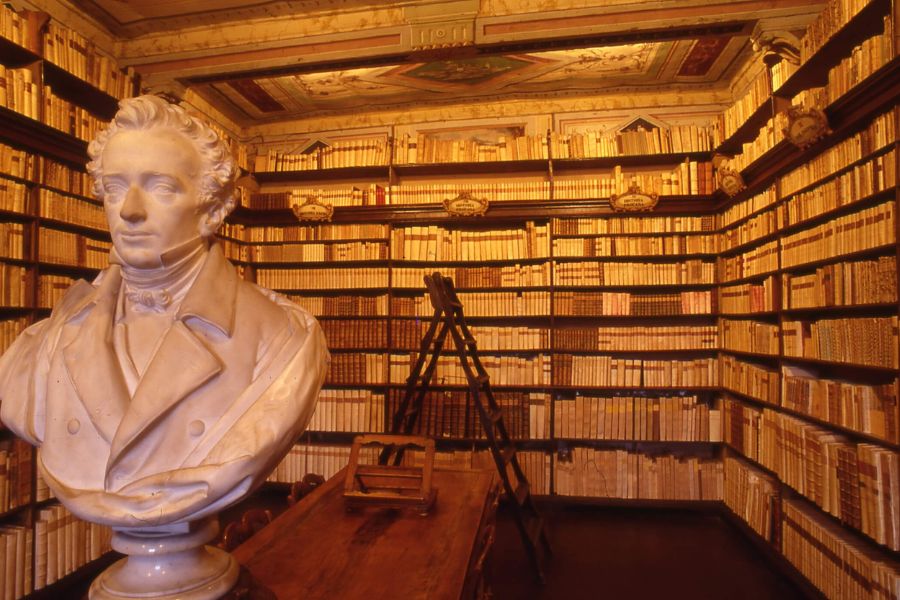
What’s fascinating is how this library represents both Leopardi’s prison and his escape. The poet rarely left Recanati in his early years, finding freedom instead through these books.
Literary and Personal Artifacts
The museum section displays numerous artifacts that bring Leopardi’s creative process to life. I was moved seeing his original manuscripts with crossed-out lines and revisions.
His personal effects—including his writing desk, quills, and spectacles—create a vivid picture of the poet at work. There’s something powerful about seeing the actual tools he used to create his masterpieces.
The tour includes viewing several first editions of his works, including “Canti” and “Operette Morali.”
Letters between Leopardi and other literary figures of his time show his connections to the broader intellectual world despite his physical isolation in Recanati.
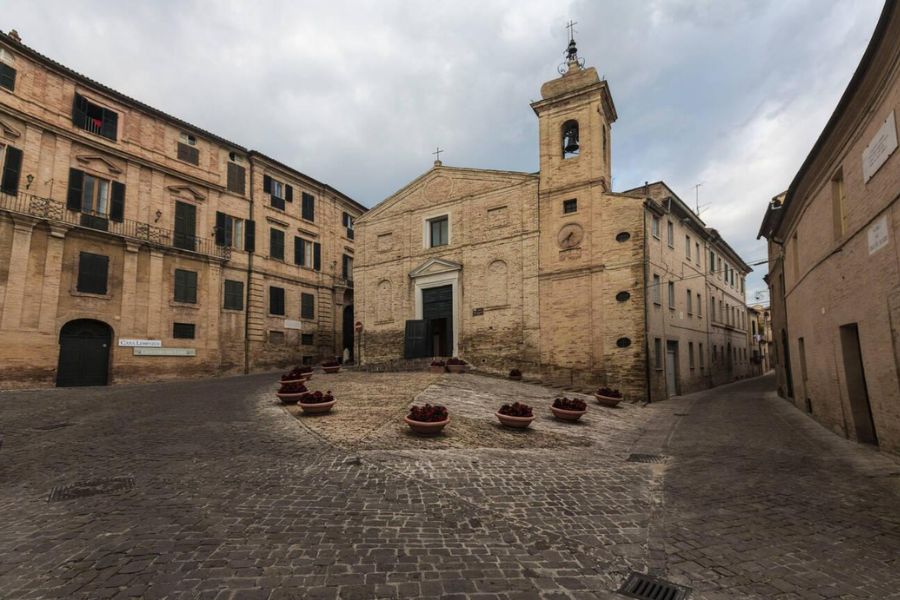
Don’t miss the collection of portraits that show Leopardi at different stages of his life, offering visual context to complement the literary journey through his home.
Cultural Events and the Legacy of Leopardi
Casa Leopardi remains a vibrant cultural center that celebrates the poet’s enduring influence through various events and global recognition. The house continues to inspire new generations of writers and thinkers who connect with Leopardi’s profound observations on nature and human existence.
Annual Literary Fair and Poetry Festivals
Each spring, Recanati transforms into a literary haven during the Leopardi Festival. I was amazed to see how this charming town fills with poetry lovers from across Italy and beyond. The festival features readings in the gardens where Leopardi once walked, bringing his words to life.
Local schools participate in poetry competitions that encourage young writers to explore themes of nature and human emotion—subjects dear to Leopardi’s heart. The town square hosts open-air performances where actors recite his most famous works under the stars.
Book fairs run alongside these events, with publishers showcasing new translations and critical studies of his work. I particularly enjoyed the guided walks that follow “Leopardi’s path” through town, stopping at landmarks that inspired his most beloved poems.
Translations and Global Impact
Leopardi’s influence extends far beyond Italy’s borders. His works have been translated into more than 40 languages, bringing his unique perspective on nature and human existence to readers worldwide.
I’ve encountered his influence in surprising places—from university courses in America to literary discussions in Japan. Notable translators like Jonathan Galassi have worked tirelessly to capture the musicality and depth of Leopardi’s Italian in English editions.
His poems, especially “L’Infinito” (The Infinite), continue to resonate with modern readers searching for meaning in an often chaotic world. Contemporary Italian writers like Umberto Eco and Roberto Calasso have acknowledged their debt to Leopardi’s thinking.
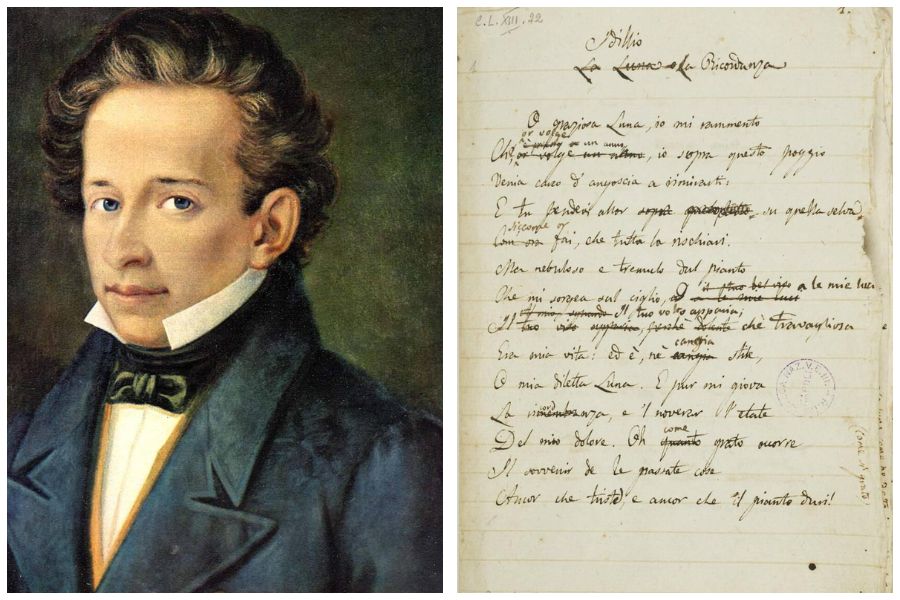
Digital archives now make his complete works accessible to scholars and casual readers alike. When visiting Casa Leopardi, I was surprised to learn that annual academic conferences bring together Leopardi scholars from five continents to discuss his ongoing relevance to literature, philosophy, and our understanding of the human condition.
Regional Charms: The Marche Experience
The Marche region offers a perfect blend of cultural richness and natural beauty that complements any visit to Casa Leopardi. This less-traveled Italian gem provides context to Leopardi’s work through its stunning landscapes and artistic heritage.
Villa Colloredo Mels and the Artistic Offerings
When I visited Recanati, I discovered that Villa Colloredo Mels houses one of the region’s most impressive art collections. This Renaissance palace showcases masterpieces by Lorenzo Lotto, including his famous “Annunciation” that captures the region’s artistic spirit.
The museum offers a perfect complement to Casa Leopardi, helping visitors understand the cultural environment that shaped the poet’s worldview. I recommend spending at least an hour exploring the four distinct sections of the museum.
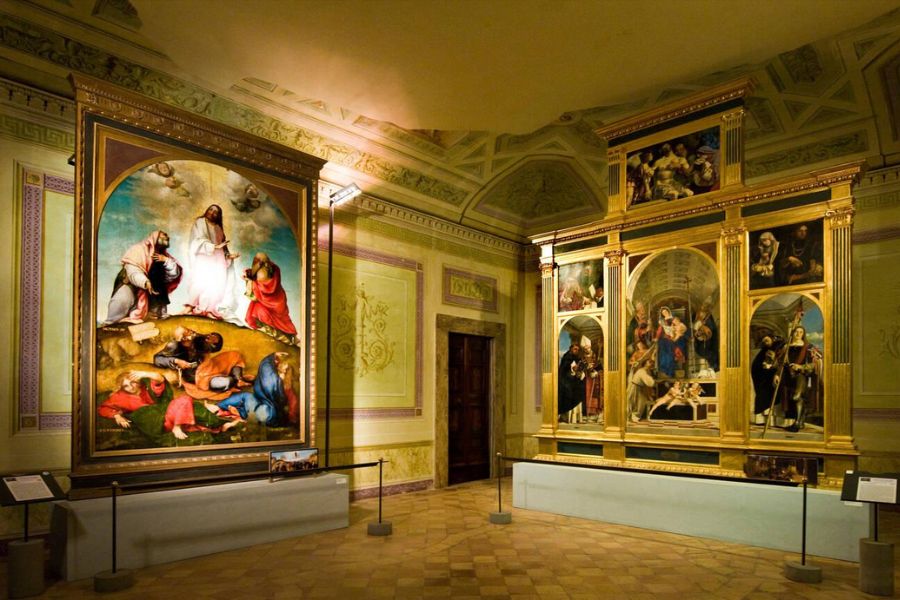
What struck me most was how the villa connects Recanati’s literary and artistic legacies through carefully curated exhibits that highlight the region’s contributions to Italian culture.
Exploring Nature in Leopardi’s Marche
The natural landscapes of Marche profoundly influenced Leopardi’s poetry. Especially his reflections on infinity and human existence. I’ve walked the same rolling hills that inspired his famous poem “L’Infinito.” The experience was truly moving.
Mount Conero offers breathtaking views of the Adriatic coastline that shouldn’t be missed. This dramatic meeting of mountains and sea creates the “infinite spaces” Leopardi referenced in his works.
The Sibillini Mountains to the west provide another natural escape. They have hiking trails through meadows and forests. During spring, the countryside explodes with wildflowers, creating scenes straight from Leopardi’s nature-inspired verses.
I suggest taking a day to explore these natural wonders. They shaped the poet’s perspective on life and existence.

